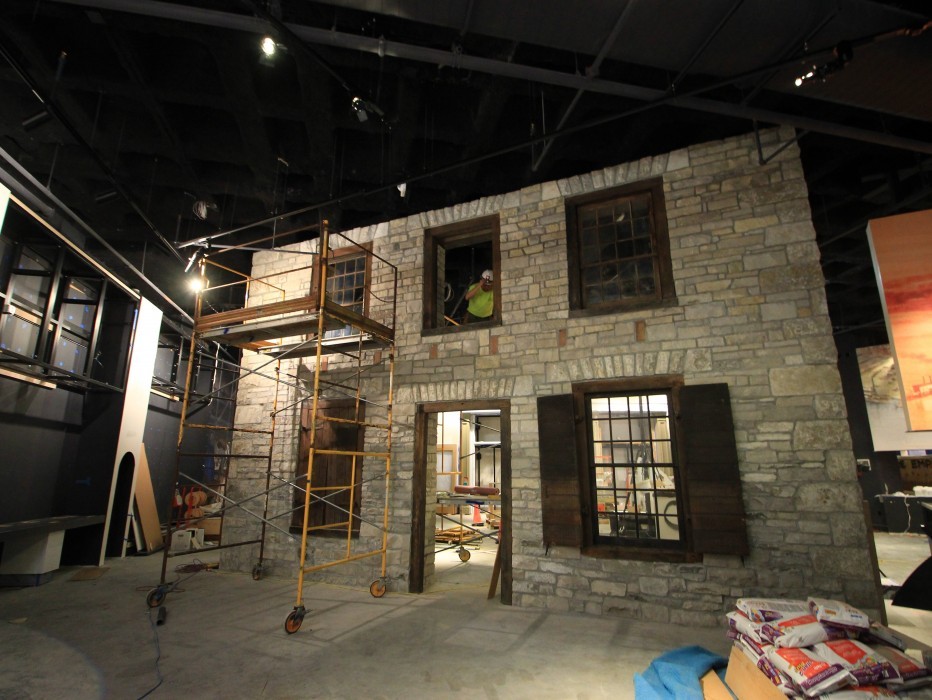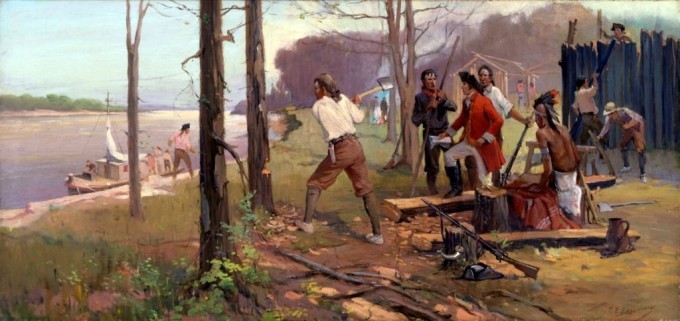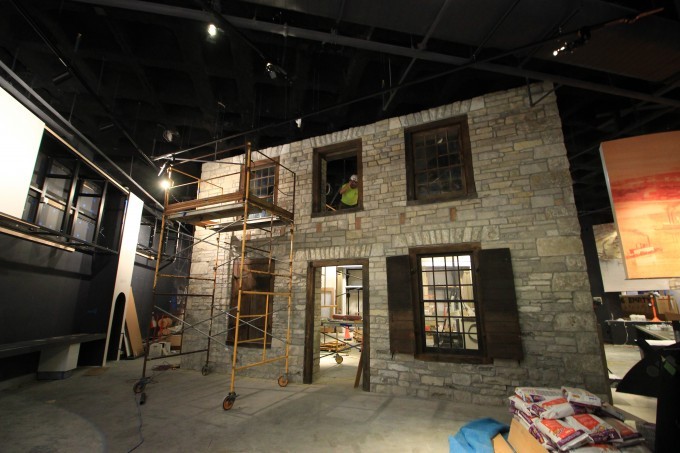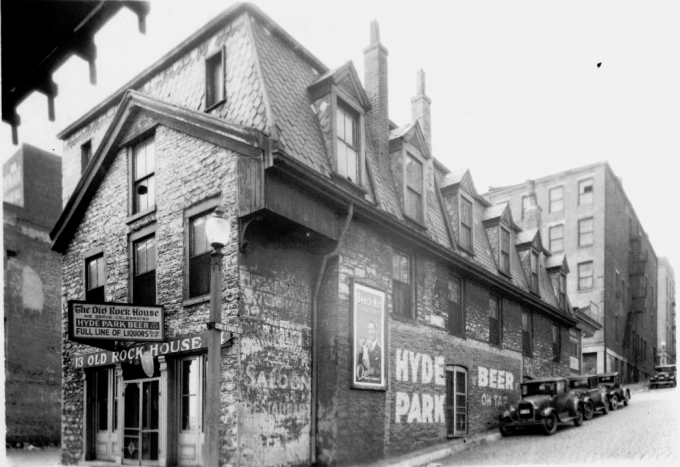Updates / Blog /


Updates / Blog /


Oscar Edward Beminghaus' "Laclede Landing at Present Site of St. Louis", c. 1914. A reproduction of the painting will be a part of exhibits in the Museum at the Gateway Arch.
On February 15, we celebrate the anniversary of the founding of our great city 254 years ago by French fur traders Pierre Laclede and his 13-year-old stepson Auguste Chouteau.
In the fall of 1763, the two journeyed from New Orleans up the Mississippi River, intent on finding a location ideal for Native American fur trading. About 18 miles south of where the Missouri and Mississippi rivers intersected, they came across a spot with river access that was also situated on high land, decreasing the risk of flooding. Laclede and Chouteau marked the spot, and Chouteau returned in February 1764, leading survey and work crews to lay out the town – officially founding the settlement of St. Louis, named for King Louis IX of France.
As French settlers quickly populated the settlement and established a fur trading community, St. Louis emerged as a prosperous river town and a city of culture. With easy river access, St. Louis became a hub for commerce and trading.


The recreated Old Rock House facade in the Museum at the Gateway Arch and a historic photo of the original structure before the riverfront was cleared.
Fur trading continued to thrive in St. Louis, and 54 years later, in 1818, a prominent fur trader named Manuel Lisa built a rubble-stone fur warehouse on the St. Louis riverfront. Ten years later, James Clemens, Jr., Mark Twain’s cousin, bought the warehouse; over the next few decades it served as a sail maker’s shop, an ironworks store, a produce and a commission house, until it was eventually dubbed the “Old Rock House.” Between 1865 and 1900, the Old Rock House had many occupants, most of whom ran businesses that served boatmen on the riverfront. It became a tavern early in the 20th century.
Over the years, all the early structures of the French settlement in St. Louis were demolished, and by 1933, the Old Rock House was believed to be the oldest standing building along the riverfront. Between 1939 and 1942, nearly all the riverfront buildings were demolished to make way for the Jefferson National Expansion Memorial, however, the National Park Service (NPS) saved the Old Rock House and restored it in the early 1940s. It was finally dismantled in 1959 to make way for a railroad line on the Jefferson National Expansion Memorial property.
Many of the Old Rock House’s original stones have been in storage in the basement of the Old Courthouse, in addition to the windows and shutters from its 1941-1942 restoration – until now. Inside the new Museum at the Gateway Arch, NPS reconstructed the riverside façade of the Old Rock House with these original stones and restored windows and shutters, supplementing matching stones where needed. When the museum opens on July 3, visitors can experience life on the St. Louis riverfront in the 18th and 19th centuries and imagine what it was like to join the crowd for a spirited evening of music and drinks at the Old Rock House.
Sources:
Bob Moore, NPS Historian
https://www.landmarks-stl.org/architecture/st_louis_riverfront/
https://www.nps.gov/jeff/planyourvisit/the-early-years.htm
https://explorestlouis.com/wp-content/uploads/2011/05/GTM-FACTS-10.pdf

Make a difference AND enjoy a delicious catered lunch with the best views in the country. Invite your family or friends to our spring fundraiser and get your tickets by May 31.
I'm ready to picnic!